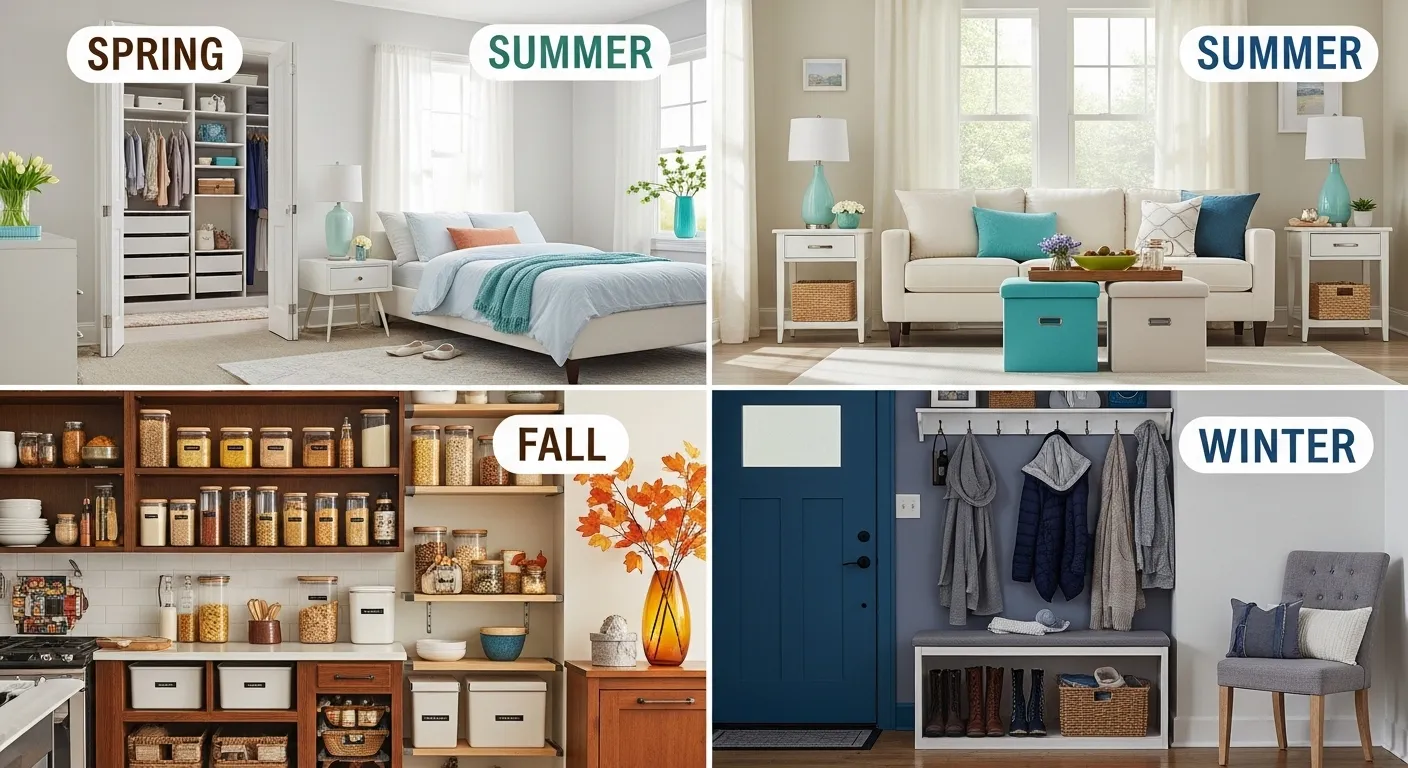Keeping your home organized throughout the changing seasons can feel overwhelming. Many homeowners struggle with rotating seasonal items, managing storage space, and maintaining order as weather patterns shift. This guide provides practical, room-by-room strategies that work with your natural seasonal rhythms rather than against them.
Why Seasonal Organization Matters
Seasonal organization goes beyond simple spring cleaning. It creates a systematic approach that makes your home more functional while reducing daily stress. When you align your organization efforts with seasonal changes, you naturally create space for current-season items while properly storing off-season belongings.
Research shows that organized spaces reduce cortisol levels and improve mental clarity. By implementing seasonal systems, you maintain this benefit year-round without major overhauls every few months.
Spring Organization: Fresh Starts and Deep Cleaning
Spring brings renewal energy that makes it perfect for major organizational projects. The warmer weather motivates decluttering while natural light reveals areas needing attention.
Kitchen Deep Clean and Organization
Start your spring organization in the kitchen since this room gets heavy daily use. Empty your pantry completely and check expiration dates. Donate unopened non-perishables that you won’t use within six months.
Clean refrigerator shelves with warm soapy water and reorganize contents by frequency of use. Place frequently used items at eye level and rarely used items on bottom shelves.
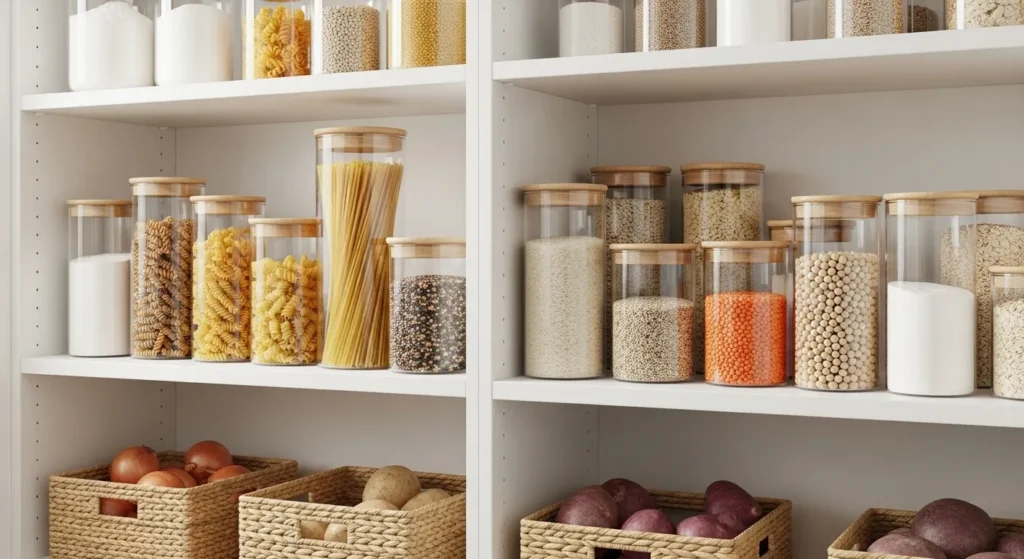
Closet Seasonal Transition
Remove winter coats, sweaters, and boots from daily-use areas. Clean items thoroughly before storage to prevent odors and pest attraction. Store heavy winter items in under-bed boxes or high shelves.
Bring lighter jackets, spring dresses, and comfortable shoes to front-facing positions. This rotation keeps your closet organized while ensuring easy access to weather-appropriate clothing.
Bedroom Refresh
Switch heavy comforters for lighter blankets. Wash and store flannel sheets, replacing them with cotton or linen options. Vacuum under the bed and organize any items stored in that space.
Clean windows inside and out to maximize natural light. This simple step makes rooms feel more spacious and improves your morning routine.
Summer Organization: Streamlined Living
Summer organization focuses on creating easy-maintenance systems since you’ll likely spend more time outdoors. Simplify indoor routines to support active summer lifestyles.
Outdoor Storage Solutions
Set up designated spaces for summer equipment like pool supplies, gardening tools, and outdoor games. Use weatherproof containers to protect items from humidity and rain.
Create an “outdoor station” near your main entrance with items like sunscreen, insect repellent, and outdoor toys. This prevents these items from cluttering indoor spaces while keeping them accessible.
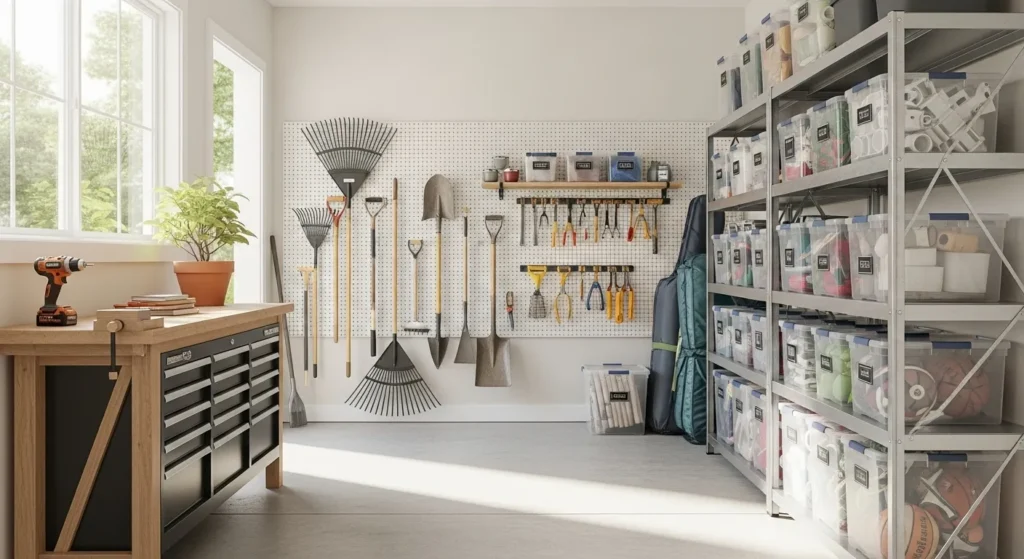
Bathroom Simplification
Summer humidity can cause bathroom clutter to feel overwhelming. Store winter medications and heavy lotions in bedroom drawers. Keep only current-season toiletries in bathroom cabinets.
Install hooks or small baskets for quick-dry items like swimsuits and pool towels. This prevents wet items from creating mess while providing convenient storage.
Living Room Lightening
Pack away heavy throw blankets and dark decorative pillows. Replace them with lightweight throws and bright accent pieces that reflect summer energy.
Organize entertainment areas for easy indoor-outdoor flow. Keep outdoor games, picnic supplies, and portable speakers in accessible locations near patio doors.
Fall Organization: Preparation and Comfort
Fall organization prepares your home for increased indoor time while creating cozy, functional spaces. This season works well for projects requiring sustained attention since cooler weather encourages staying inside.
Wardrobe Rotation Strategy
Gradually introduce fall clothing while maintaining some summer pieces for warm days. Store summer-only items like swimsuits and tank tops but keep transitional pieces accessible.
Clean and inspect winter coats before the weather requires them. Address any needed repairs or dry cleaning while you have time to complete these tasks.
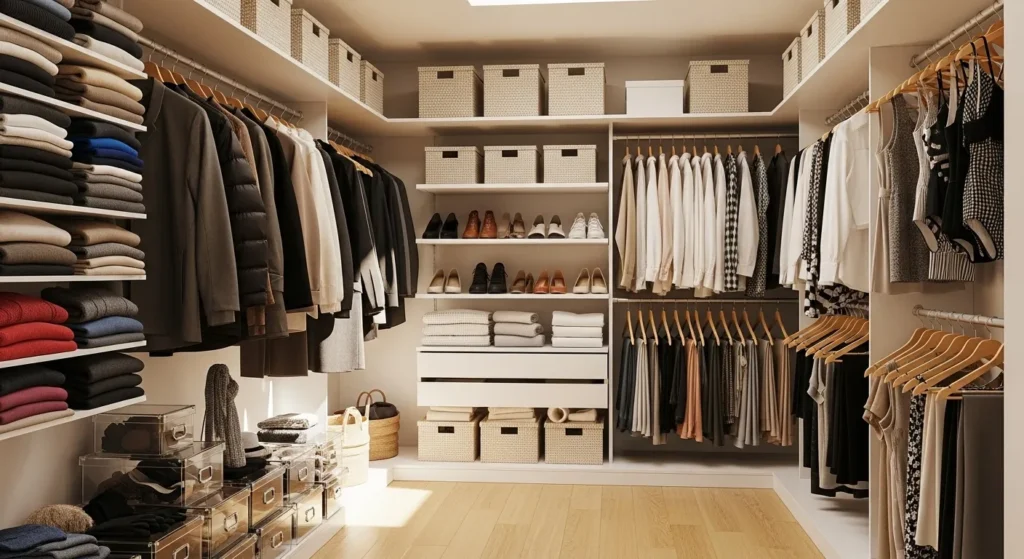
Home Office Setup
Fall often brings increased indoor work time, making office organization crucial. Clear summer vacation materials and focus on creating efficient work spaces.
Organize school and work supplies for the academic year. Create designated areas for different activities to prevent daily items from mixing with occasional-use supplies.
Kitchen Preparation for Comfort Cooking
Fall means more cooking and baking, so organize kitchen tools accordingly. Make slow cookers, baking sheets, and comfort-food ingredients easily accessible.
Clear summer entertaining items like picnic supplies and outdoor serving pieces. Replace them with items supporting cozy indoor meals and warm beverages.
Winter Organization: Cozy Efficiency
Winter organization creates warm, efficient spaces that support indoor living. Focus on systems that work well in artificial lighting and support extended indoor time.
Entry Way Winter Station
Create a functional entry area for wet coats, boots, and winter accessories. Use waterproof mats and boot trays to protect flooring while keeping necessary items organized.
Install hooks at various heights for different family members. Include a basket for gloves, scarves, and hats to prevent these small items from getting lost.
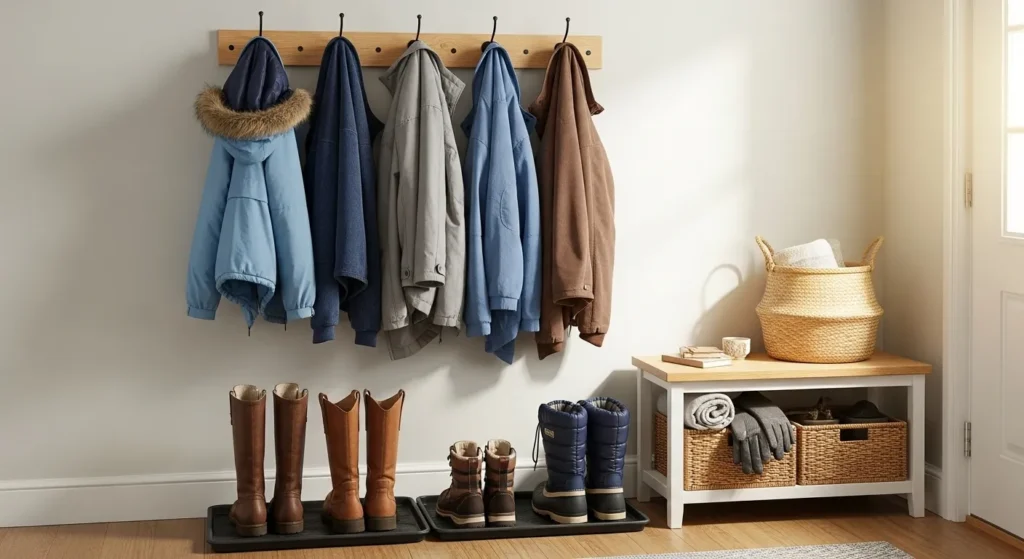
Living Space Comfort Organization
Arrange furniture to support winter activities like reading, crafts, or indoor hobbies. Create designated storage for books, puzzles, and other indoor entertainment near seating areas.
Organize throw blankets and pillows for easy access. Use attractive baskets or storage ottomans to keep these comfort items tidy while maintaining room aesthetics.
Seasonal Decoration Storage
Develop a system for holiday decorations that makes setup and takedown efficient. Label storage containers clearly and keep similar items together.
Store decorations in accessible locations since you’ll use them repeatedly throughout winter months. Consider transparent containers to easily identify contents without opening multiple boxes.
Year-Round Organization Systems
Successful seasonal organization relies on systems that work consistently throughout the year. These foundational approaches support your seasonal transitions while maintaining daily functionality.
The Four-Container Method
Use four labeled containers for seasonal transitions: Keep, Donate, Store, and Discard. This method speeds decision-making while ensuring items end up in appropriate locations.
Apply this system room by room rather than attempting whole-house organization at once. Complete one space fully before moving to the next area.
Monthly Organization Tasks
Schedule specific organizational tasks for each month to prevent overwhelming seasonal transitions. January focuses on post-holiday organization, while April addresses spring cleaning preparation.
Create a simple calendar noting which areas need attention each month. This prevents forgetting important tasks while spreading work throughout the year.
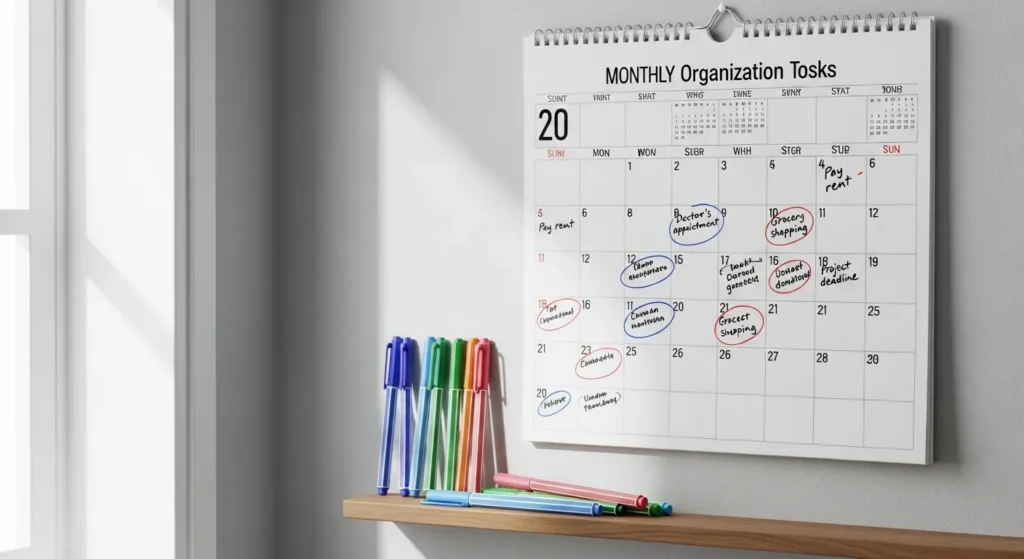
Storage Location Strategy
Designate specific areas for different categories of seasonal items. Keep frequently rotated items in easily accessible locations like bedroom closets or hall storage.
Store rarely used seasonal items in less convenient locations like attics or basement areas. This maximizes prime storage space for items you need regularly.
Room-by-Room Seasonal Checklists
Bedroom Seasonal Organization
Spring:
- Switch to lighter bedding
- Rotate clothing in closets
- Clean under beds thoroughly
- Organize jewelry and accessories
Summer:
- Store heavy comforters
- Install or clean ceiling fans
- Organize summer clothing by frequency of use
- Create outdoor activity storage
Fall:
- Gradually introduce warmer bedding
- Organize back-to-school or work items
- Check heating system functionality
- Store summer-only clothing
Winter:
- Add extra blankets to beds
- Organize cold-weather clothing
- Create cozy reading areas
- Check window insulation
Living Room Seasonal Flow
Each season brings different living room needs. Summer requires less storage furniture since many activities move outdoors. Winter demands more storage for books, crafts, and indoor entertainment.
Adjust your living room organization to support each season’s lifestyle. This might mean moving storage ottomans closer to seating in winter or creating more open floor space in summer.
Common Seasonal Organization Mistakes
Many people attempt too much organization at once, leading to burnout and incomplete projects. Instead, focus on one room or category at a time until each area functions well.
Another common mistake involves purchasing storage solutions before organizing existing items. First determine what you actually need to store, then choose appropriate containers and systems.
Avoid storing items without proper cleaning. Dirt, moisture, and food particles attract pests and create odors that make stored items unusable when you retrieve them.
Creating Sustainable Organization Habits
Successful seasonal organization requires consistent small actions rather than marathon organizing sessions. Spend 15 minutes daily maintaining organized spaces to prevent major accumulations.
Schedule seasonal transitions gradually over several weeks rather than attempting complete changeovers in single weekends. This approach reduces stress while ensuring thoroughness.
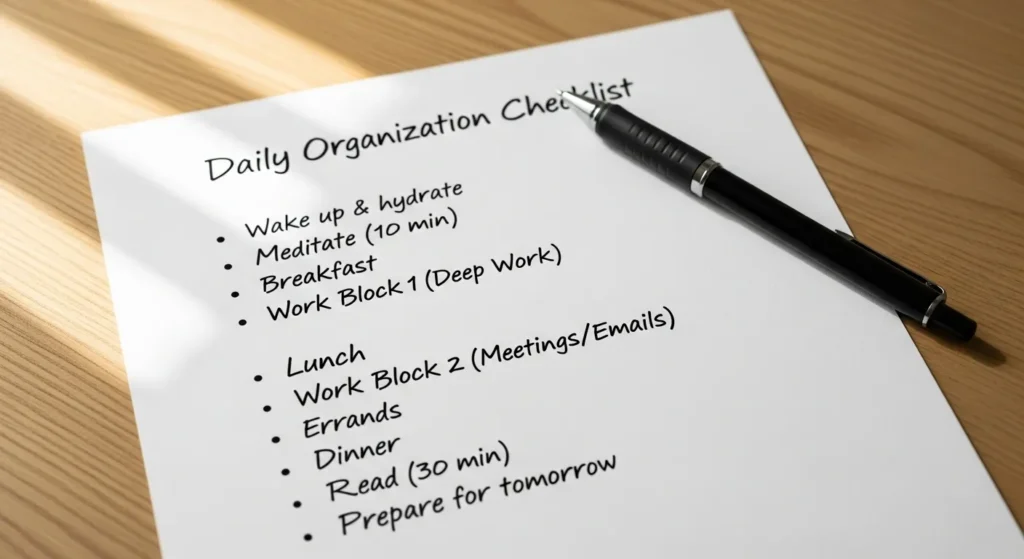
Budget-Friendly Seasonal Organization
Seasonal organization doesn’t require expensive storage systems. Repurpose containers you already own, like shoe boxes for drawer dividers or glass jars for small item storage.
Check thrift stores and discount retailers for storage solutions during off-seasons when prices drop. Buy winter storage containers in spring and summer storage items in fall.
Consider making some storage solutions using materials from your affordable backyard makeover projects or other home improvement activities.
Technology and Seasonal Organization
Use smartphone apps to track seasonal tasks and inventory stored items. Photo inventories of storage containers help you remember contents without opening everything.
Set calendar reminders for seasonal transition tasks like switching air filters, rotating clothing, or checking stored holiday decorations.
When to Seek Professional Help
Some organizational projects benefit from professional assistance, especially if you have mobility limitations or lack adequate storage space. Professional organizers can create customized systems that work with your specific living situation.
Consider professional help for one-time setup of major storage areas like basements or attics. Once proper systems are in place, you can maintain them independently.
Maintaining Your Seasonal Organization Systems
Success depends on regular maintenance rather than perfect initial setup. Review your systems quarterly to identify what works well and what needs adjustment.
Be flexible with your systems as your lifestyle changes. A system that worked when children were young may need modification as they grow and their needs change.
Keep organization simple enough that all household members can maintain it. Complex systems often fail because they require too much time or understanding to sustain.
Making Seasonal Organization a Family Activity
Include all family members in seasonal organization to ensure everyone understands and can maintain the systems. Assign age-appropriate tasks to children to teach organizational skills.
Make seasonal transitions enjoyable by playing music, ordering pizza for organization day, or celebrating completed projects with family activities.
Create clear expectations about maintaining organized spaces. When everyone participates in creating systems, they’re more likely to help maintain them.
Conclusion
Seasonal home organization creates functional, stress-free living spaces that adapt to your changing needs throughout the year. By implementing these strategies gradually and maintaining simple systems, you’ll find that keeping your home organized becomes a natural part of your seasonal routine.
Remember that perfect organization isn’t the goal – functional organization that supports your lifestyle is what matters. Start with one room or category, develop systems that work for your specific situation, and build on your successes gradually.
With consistent attention and realistic expectations, seasonal organization becomes a helpful tool rather than an overwhelming chore. Your organized home will support better daily routines while reducing stress during seasonal transitions.
